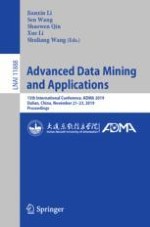This book constitutes the proceedings of the 15th International Conference on Advanced Data Mining and Applications, ADMA 2019, held in Dalian, China in November 2019.
The 39 full papers presented together with 26 short papers and 2 demo papers were carefully reviewed and selected from 170 submissions. The papers were organized in topical sections named: Data Mining Foundations; Classification and Clustering Methods; Recommender Systems; Social Network and Social Media; Behavior Modeling and User Profiling; Text and Multimedia Mining; Spatial-Temporal Data; Medical and Healthcare Data/Decision Analytics; and Other Applications.
